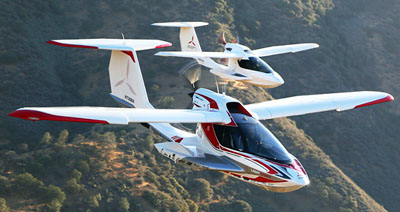
Icon has come a long way since it was first announced but the finished product is a roaring success at design, brilliantly aimed at its target market of new or returning pilots.
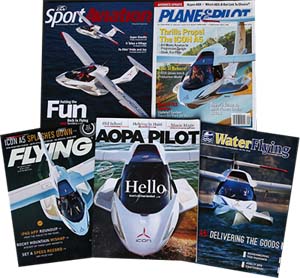
Call it the Quintuple Crown of aviation marketing, capturing five magazine covers in the same month. Think about what that took to achieve.
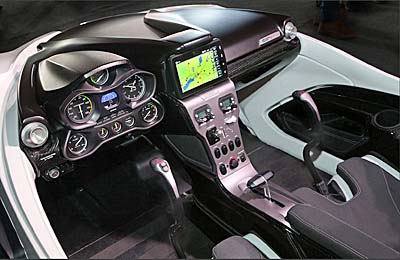
A5’s interior looks like a luxury car, by very explicit design. Remember, they hope to appeal to non-pilots thus a more familiar (and handsome) interior was needed.
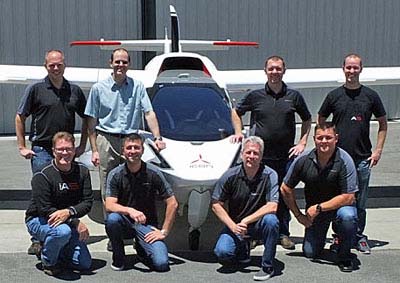
In addition to their engineering staff, Icon retained Adam Morrison of Streamline Design to consult on meeting ASTM standards, about which Morrison is an international expert. A tribute to their engineering staff and Streamline, Icon easily passed FAA audit in June 2015.
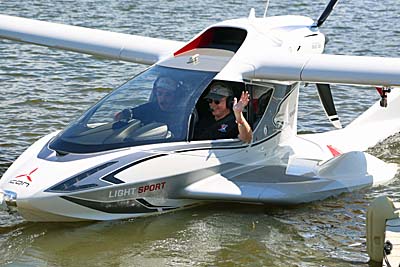
Come on along for our Video Pilot Report on A5, appearing just below. Before the engine even started I was already smiling. So might you.
The Video Pilot Report below may be one of the most anticipated VPRs my video partner Dave and I have produced. I did the flying at AirVenture Oshkosh 2015 on Lake Winnebago in late July, but because Icon preferred to provide the video footage, it has taken some weeks to put it all together.
Production of one of these VPRs is a two-part effort. First, I invested some time to get to where Icon did their demo flying (away from all the other flying locations associated with Oshkosh). Weather and the company’s desire to take aloft a reported 150 of their waiting owners forced a couple schedule changes. Since returning home, we worked with several helpful folks at Icon to assemble all the right video pieces. Finally, Dave invested many hours editing what you see below (or here).
Our video should show you most of what you want to see about this impressive LSA including water takeoffs and landings, in-flight maneuvering, stalls (such as they are), low flying over the water, and the interior of the airplane including Icon’s highly emphasized Angle of Attack indicator. At times, the audio is a bit abrupt because the noise-canceling quality of the connection stopped when we were not talking yet I think you’ll find lots to like in the 25-minute video.
Thanks to their very professional marketing and shrewd planning, Icon Aircraft grabbed the golden ring, capturing no less than five of aviation’s top magazine covers in the same month. I’ve been in aviation longer than I care to admit and I don’t believe I’ve ever seen that. It is the airplane equivalent of winning horse-racing’s Triple Crown. Icon has since been flying a number of journalists from non-aviation publications.
If you read those pilot reports in print magazines, you observed that every author gave glowing reviews. Were those writers swayed by Icon’s superb media handling or is A5 that good? It’s a valid question. After I returned from my flight more than one person hearing my complimentary assessment said, “Aw, you just drank the Icon Kool-Aid.”
You can believe I succumbed to the Icon “reality distortion field” (a phrase attributed to another great marketer, Steve Jobs) but I have overwhelmingly good things to say about A5. The LSA is artistically achieved, flies well, is comfortable, and oozes outdoor sports sex appeal. They nailed the stall characteristics that can confound new pilots, who have been the company’s primary target since I first met CEO Kirk Hawkins while on the EAA Sport Pilot Tour back in 2005 … a time when he remembers being “just one guy with a business card.”
After my flight and before returning to Wittman Regional Airport, I sat for nearly an hour in TJ’s restaurant where Icon did their demo flying so I could type notes on my iPad. What appears below are some of the balancing remarks.
I flew with Craig Bowers, an ex-military jet jock. His military training showed in various ways (as you might notice on the video below) but that background gave him a solid grounding in the use of an AoA indicator. The instrument is widely used on fighter aircraft. I have deep respect for AoAs, and Icon has done a lot to increase pilot awareness of it. However, most recreational or GA pilots are not used to flying with one and it takes some relearning. You’ll hear Craig often refer to “on-angle white.” This is AoA talk and perhaps the best thing I can recommend is for you to watch the AoA — the uppermost instrument in front of the pilot — as we maneuvered. While AoA use may not be automatic for pilots used to keeping a sharp eye on airspeed, most will quickly adapt to the Icon AoA presentation. I’ve often used the AoA indicator in Dynon‘s SkyView instrument — this can be added for very modest hardware cost — but I don’t find their implementation as informative. Like others, they use a series of colored lines and chevrons where Icon’s simple analog wing-airfoil needle is much clearer in my opinion.
A5 handling is very predictable and reassuring. I’d call it about as good as it gets for a student pilot, or for that matter, for most of us. Those of you who love aerobatics or seek feather-light handling with snappy response might be less satisfied. Icon has repeatedly said they seek those two million Americans who got their Student Pilot certificate and then abandoned the pursuit, perhaps as life got complicated for them. I sincerely hope Icon can sell every one of them an A5 and I wholeheartedly applaud the effort to go after that largely-ignored market. A5 handling should suit all returning students.
As you heard in the video, I’d prefer an altimeter better suited to seaplane flying, which is commonly done at low altitudes. The installed single pointer model moves only about one centimeter for 1,000 feet; we never went above that altitude in 25 minutes of flying. I’d also like a more tactile trim button. The installed one slid fore and aft and you had to check an indicator to know where it was set. Finally among my few gripes, a forward-opening canopy can be difficult to escape in an upset although open side windows would allow egress for determined occupants. Of course, such a problem is remedied by not forgetting to have the gear retracted on water landings. One downside of open windows — which I otherwise loved immensely — came in the rough water conditions of the day. I got doused good once when we caught a wave. Fortunately, the iPhone I had belt-clipped on the outside survived the soaking.
Some pilots yearn for the fastest airplane they can fly without a Medical and they benefit from numerous LSA choices that can hit the 120-knot (138 mph) speed limit. Icon’s A5 is not one of them. A few speeds for you — cruise is 85-95 knots with what I’d call a relaxed cruise at 75-85; maximum speed (or Vh) is listed in the brochure at 95 knots or 109 mph; stall comes at 39 knots with full flaps and 45 clean. We cruised the shoreline at low altitude at 70 knots at 4500 rpm at which power setting the Rotax 912 iS burns around 3-3.5 gph. As you hear on the video, sink rate with the prop windmilling in a stalled configuration is about 900 fpm; although it would be a very firm touchdown, this is slower than the descent rate under parachute.
Speaking of the latter, Icon’s brochure states, “Due to Icon’s exemption to the U.S. LSA weight limit … the Icon Complete Airplane Parachute is mandatory for U.S.-registered A5 aircraft. Complete Airplane Parachute pricing is not included in the estimated price.” The comment brings up the last gripe I’ll offer. Any seaplane costs more than a comparable land plane. Modestly priced models like Searey or Super Petrel run $150,000 or so, already beyond many budgets. Icon with a parachute and popular options will run well over $200,000 in 2015 dollars.
Here’s a few more stats — Icon said useful load is 430-550 pounds. With, say, 15 gallons of fuel, you’ll have 340-460 pounds of payload. A5’s baggage area can hold 60 pounds. Craig believed we flew at an empty weight of 1,075 pounds, which included four Go-Pro cameras and their mounts but an unstated amount of fuel.
In closing, I would give Icon an A-minus grade. A5 is imaginatively designed and should satisfy a large percentage of pilots or wannabes. No airplane ever designed is perfect for every buyer and neither is A5. Yet had I worked to create this flying machine I would, rightly so, be immensely proud of my achievement. I salute Team Icon’s effort and wish them the best as they ramp up production to meet a record-setting order book of some 1,500 deposits.


Leave a Reply